You’ve recently reached out to a potential employer, and they’ve expressed interest in seeing your portfolio.
You excitedly compile a few writing examples in a Google Doc or WPS document and then send it.
However, you wonder what went wrong as days become weeks without a response. Tough life, yes?
No, now is not the time to sulk. From a poll I created on Twitter, I found that close to 70% of hiring decision-makers in the writing industry rely on a writer’s portfolio.
Editors, content managers & human resource personnel don’t have the luxury of time to waste. That’s why it’s vital to always make a captivating first impression.
Fortunately, I interviewed four influential hiring decision-makers in the writing industry to uncover the overlooked factors that often prompt them to send those disappointing rejection emails that say, “Sorry. We’ve decided to move on with another candidate.”
Let’s dive right in!
10 Damaging Portfolio Mistakes That Are Keeping Content Writers From Landing Jobs
When you apply for a job, many factors are at play, many of which are beyond your control.
However, it’s important to remember that there are also aspects within your control.
Let’s find out what Bayo Moses, John Iwuozor, Folasade Daini, and Ayanfe Fakunle say about these common portfolio blunders that are often overlooked.
Not having a defined audience or niche
When I started my career as a content writer in 2020, I wrote everything that came my way.
However, it wasn’t until 2022 that I realized the power of niching down, so I narrowed it down to writing for finance & fintech brands.
I know some may disagree with me and question my emphasis on niches. I feel you. You’re worried about missing out on other opportunities.
However, the best opportunities will find you when you have a core focus.

John Iwuozor, Content Marketer & Founder of Chess For Sharks, is big on hiring writers with industry knowledge and expertise.
He owns a chess blog and will never hire someone who has never EVEN trapped a king!
He explained, “I’m into chess. It’s very niche so I can’t afford to hire someone who doesn’t really have good enough knowledge. I’m trying to avoid content devoid of depth and filled with generic sentences. Someone with chess experience can explain certain concepts better and pass the point across more fluently.”
Niching down allows you to focus on the right things and stand out. For instance, imagine you’re a crypto writer with a portfolio full of crypto articles, and a job opens specifically for crypto writers.
Would the hiring manager choose someone with random samples on unrelated topics like food, business, and a single article on saving over you? Think about it!
>>> Read More: Rejection Emails Suck! How to Respond to Rejection Emails
Poor writing & grammar skills
Being a great writer isn’t easy. In today’s world, with numerous AI tools like Chat GPT and countless content writers, you have to put in extra effort to truly stand out.
When it comes to building a portfolio, Ayanfe Fakunle, a business marketing specialist at Reiz Tech, advised writers to focus on developing strong research and creativity skills.
He wrote, “I look extensively for writers who have consistently produced high-quality content. Other secondary qualities are professional and reliable prospects, who possess strong research and adaptability skills, and showcase creativity in their writing approach.”
Bayo Moses, an editor, and publisher, shares a similar sentiment. He values writers with exceptional storytelling skills and emphasizes understanding the target audience when creating content.
He shared, “Writing is easy. Writing for an audience is hard. You have to be more than a mind reader.
If someone has devoted time and attention to writing for a specific audience or niche, and they have received genuine response or feedback from the said demography…then nothing can stop them.”
Lack of attention to detail
In a world where our attention span continues to decline, Bayo Moses believes that good writers stand out by paying attention to even the most minor details.
He advised that being attentive to every aspect, no matter how minute, demonstrates professionalism and a strong dedication to one’s work.
If your profession weren’t writing, a few grammar errors wouldn’t matter, right? However, now that you’re trying to showcase your writing prowess, your words must be impeccable.
When building your portfolio, remember to showcase only the writing samples that are relevant, error-free, and accurate.
Brands are easily put off by articles that lack depth and contain numerous grammar errors. So, present your best work to create a strong and positive impression.
Not taking the time to build relevant samples in your desired niche
We can all agree that nobody wants to be in a relationship with someone who talks a lot but takes little action.
Similarly, hiring managers won’t be interested in a writer whose words lack substance without any proof of actual work done.
I often see many new writers make the mistake of thinking they need to land a job before they can start building their portfolio. That’s not true!
Here’s my formula for building a portfolio without a job:
Step 1: Find five brands you genuinely love and enjoy writing for. Take some time to study the type of content they create.
Step 2: List around ten topics you think would be a good fit for each brand. Once you have your topics, divide them into two groups.
Step 3: Start working on the first group and write articles about those topics. You can publish them on a free blog site like Medium to showcase your writing skills.
Step 4: After that, move on to the second group of topics and reach out to the editors of your chosen brands. Pitch your ideas to them and see if they want you to write for them.
Step 5: Repeat Steps 1-5. If you can do this successfully, you’ll gradually build a strong portfolio filled with relevant samples, and who knows, you might even land a job along the way!
Not using a portfolio website or personal website
I once requested a portfolio from a writer, and she told me she was unsure where she kept it—kept it? I was lost.
If you don’t organize your samples into a website or easily accessible place, you might end up misplacing them or forgetting where you stored them, just like what happened to that writer.
Thankfully, there are a lot of portfolio websites that are free to use. Some examples include:
A better option is to create your website. The problem with free sites is that they can shut down unexpectedly while your website remains under your control.
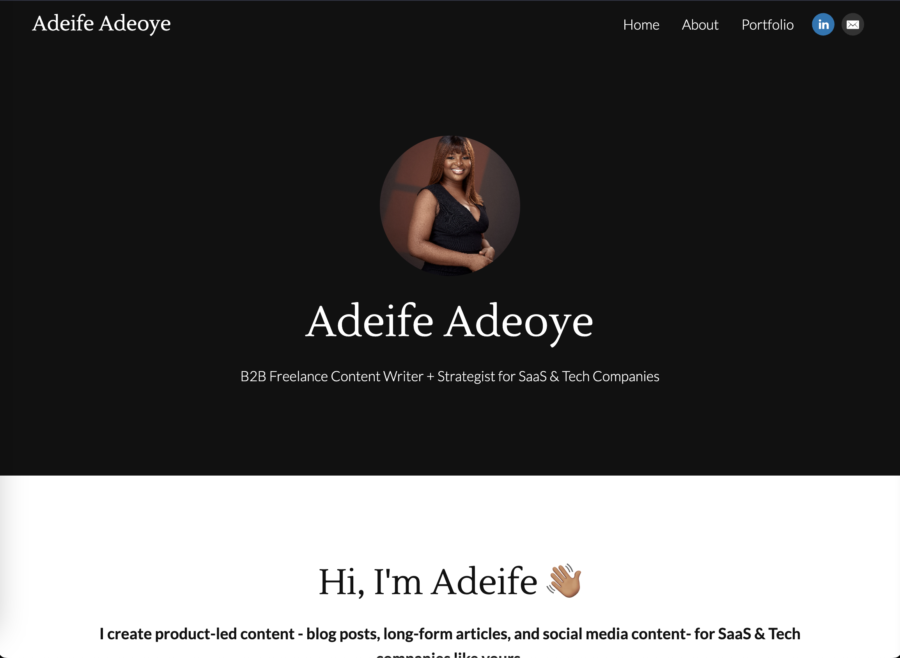
Folasade Daini, who runs a content marketing agency, dislikes it when writers send samples in a Google Doc.
She told me, “The most important mistake a writer should steer clear of is using a Google Drive link instead of a website. It’s essential to make accessing your portfolio as simple and user-friendly as possible.”
Having a website makes you appear more responsible. It shows that you’ve invested time and effort into creating a great portfolio, reflecting your dedication and professionalism.
>>> Read More: Exploring The World Of Travel Writing With Favour Obioha
Uploading numerous irrelevant samples
Whenever I buy new dresses, I always love to show them off. I’m open to attending several events so I can flaunt my style and feel confident in my fashionable outfits. Vain much?
I know you’ve written many articles, and you’ll also love to show them off. However, you must include only your BEST work when building a portfolio.
Ayanfe Fakunle revealed that including so many irrelevant pieces in a portfolio is WRONG, and I agree.
“One conspicuous mistake I noticed is – writers offload too many writing samples on their portfolio.
While it’s understandable you want to convey the idea that you have written many articles; remember that recruiters don’t have the luxury of time combing through your portfolio. Instead, when creating a portfolio, writers must showcase their best work.
A portfolio with subpar or poorly edited writing samples can create a negative impression and undermine the writer’s credibility and professionalism.
It’s important to carefully select and polish each writing sample before including it in the portfolio. Typos, grammatical errors, or poorly structured content can reflect poorly on the writer’s attention to detail and writing abilities.”
Submitting disorganized portfolios
Don’t present your portfolio like you dug it out from an archive. Organize it and make it presentable to look at.
– John Iwuozor.
John pegged it right. Make sure your portfolio catches the eye right away. Include a user-friendly navigation menu and clearly label different sections or pages for easy navigation.
Organize your work into categories and always showcase your best pieces. Don’t forget the design and layout – choose a clean, professional look that matches your brand.
Use high-quality images, readable typography, and neat formatting to make your portfolio visually appealing and enjoyable to read.
Absence of an About Page
When hosting your portfolio on a website, creating a well-crafted About page is essential. This section provides an opportunity for your authentic self to shine, demonstrate your writing skills, showcase your style, and express your professional aspirations.
I genuinely love Neil Patel’s, About Page.
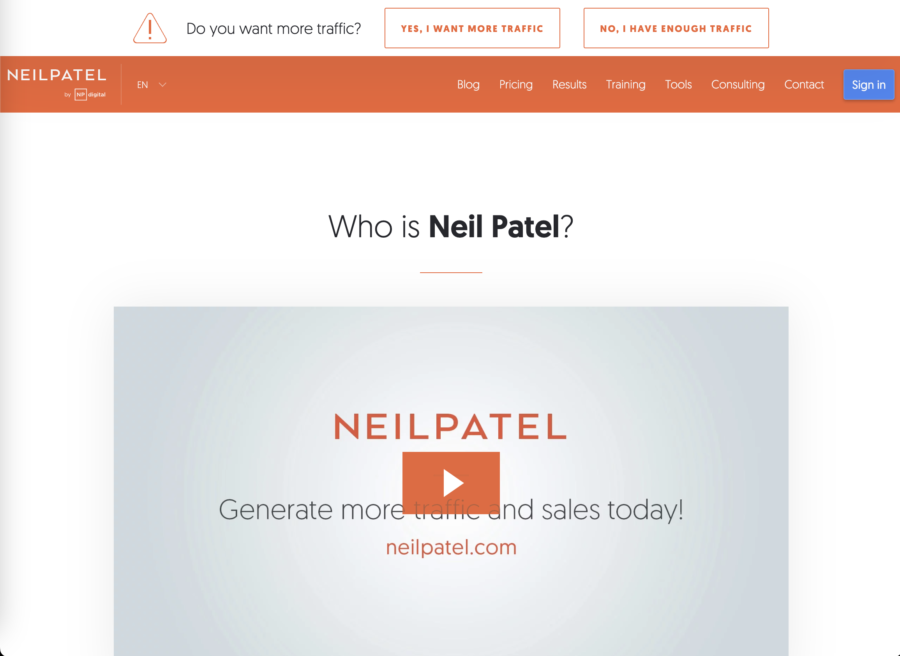
Taking inspiration from Neil’s page, here are a few things you can include in your portfolio:
- Your work background: Neil revealed relevant experiences from his past projects, which increases his credibility.
- Recognition & achievements: He also proudly mentioned the recognition and awards he received from top brands like Forbes and The Wall Street Journal.
- Your results: Here are the exact words he used to highlight his impressive results: “With more than 10 million visitors a month and an audience from 180 countries, I know what it takes to help your online presence grow quickly and effectively.”
- Your work process: Neil doesn’t keep his prospects in the dark about how he can assist them. Instead, he laid out his work process in three straightforward steps.
- Your social media accounts: Neil included a link to all his social media accounts to help prospects find him online.
No clear call-to-action
People love to be told what to do. A call to action (CTA) is like an invitation that encourages the reader to do something specific, such as getting in touch to learn more or hiring you for a writing project.
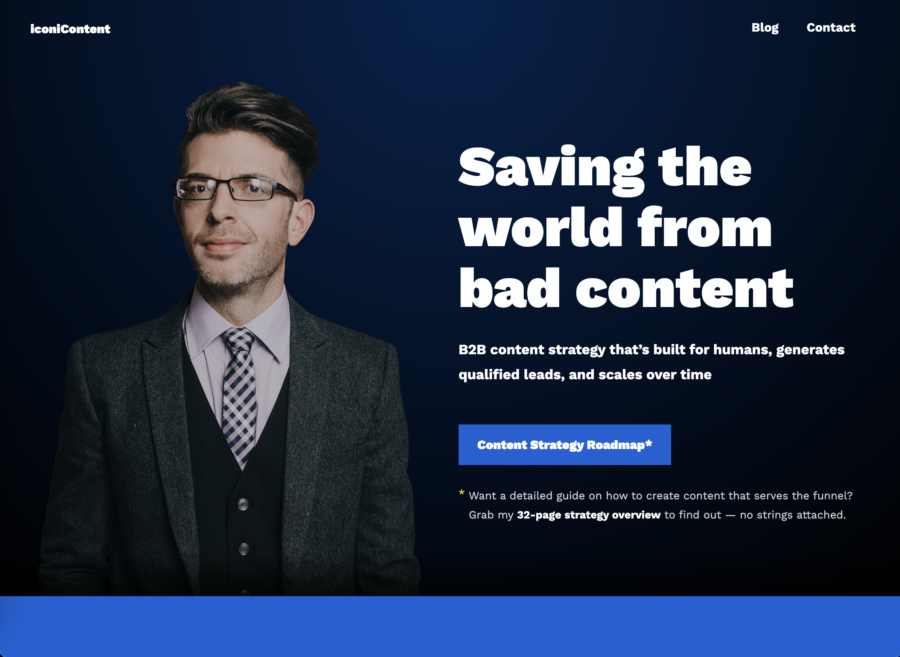
Ensure that your CTAs are clear and specific. Rather than using a generic text that says “Hire Me,” consider replacing it with a more compelling alternative, such as “Book A Discovery Call To Learn More About My Writing Services.”
It’s also essential to make your CTAs clear and vivid. Make sure to position these texts in a noticeable spot, like the header or footer of your portfolio, so that it catches your prospect’s attention without any effort.
Not enough proof of results
I recently came across a book called “$100M Offers” by Alex Hormozi. If you’re an entrepreneur or marketer, I highly recommend reading it. Alex emphasizes a crucial concept for every entrepreneur or marketer in this book: People Pay For Certainty.
Trust me; nobody will be willing to pay top dollar to a writer who hasn’t proven their ability to deliver results. That’s why it’s crucial to gather great feedback from your clients.
Some clients will gladly provide positive testimonials, while others may need a gentle nudge – don’t be afraid to ask for it.

If you want prospects to be impressed by your work, you must show them how you’ve helped others. A “Testimonial Section” is essential, and I recommend featuring it on your homepage.
Most people won’t search every page on your website to find out what others say about you, so make it easy for them by placing testimonials where they can’t miss them.
Read Also: Navigating ChatGPT For Creative Independence With Jojo Inika
Ready to create a banging portfolio?
In today’s fast-growing freelance industry, where content writers are multiplying exponentially, having a captivating portfolio is an invaluable asset to distinguish yourself from the crowd.
A portfolio is more than a collection of words on a screen. It’s a testament to your expertise, professionalism, and commitment to excellence.
A remarkable portfolio is important, but nurturing a solid personal brand is equally essential.
When prospects are impressed by your portfolio, the next thing they do is check your online presence. You don’t want them to come across a neglected profile, right? It’s essential to constantly update your portfolio by removing outdated information, adding new and relevant content pieces, and updating contact details when necessary.
I believe this article has been extremely helpful, and I’m confident that you now know the most important portfolio mistakes content writers must avoid. To express your gratitude to me, kindly share this article till it reaches the ends of the earth. winks
Are you new to content writing? Do you want to learn how to build a thriving writing career while attracting your dream clients? If yes, sign up for a personalized coaching session with me. BOOK A FREE DISCOVERY CALL NOW.

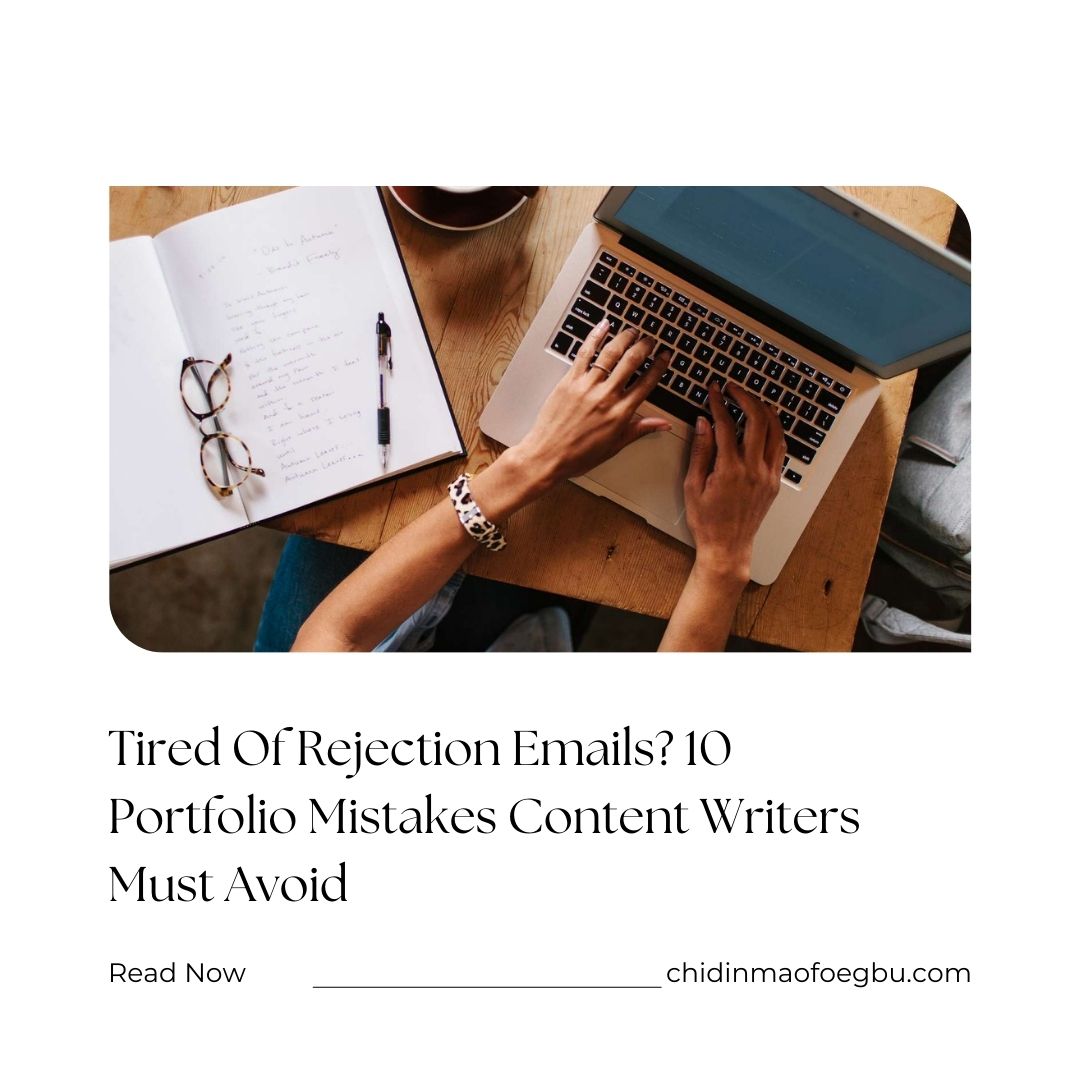
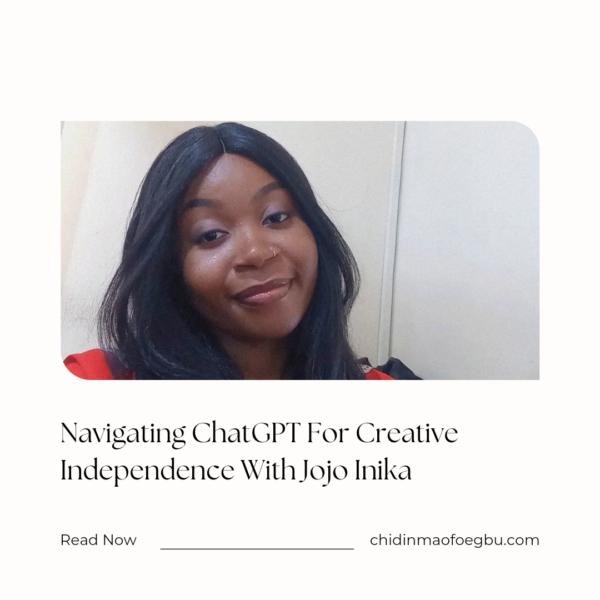

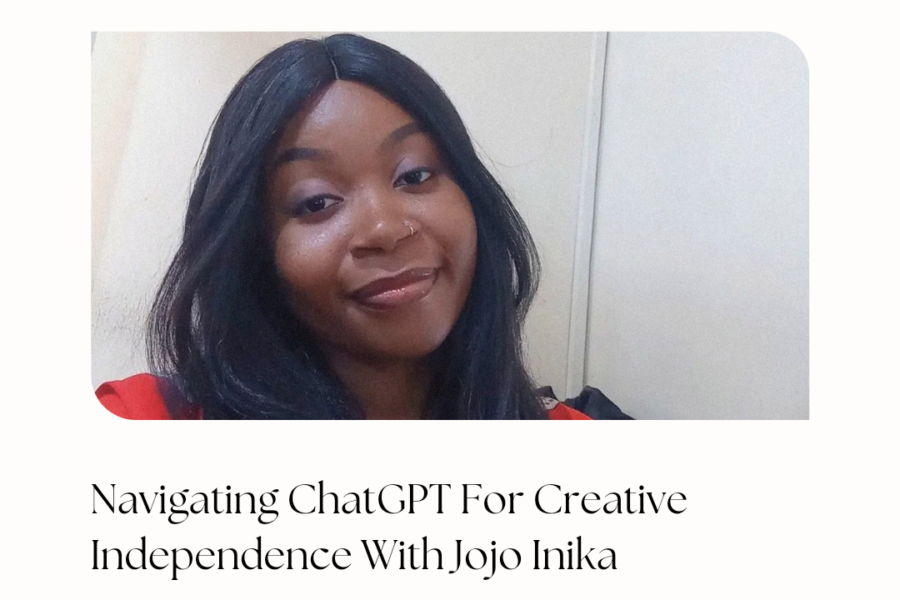


I’m not a content writer, but I learnt great tips for building a personal professional portfolio
Paying attention to every details and Excellence in delivery was my take home, Thank you
I’m glad you found it useful. Thank you for the kind words.
You are good at what you do, and it shows in the way you wrote this article. Keep up the great work
Thank you for the kind words!